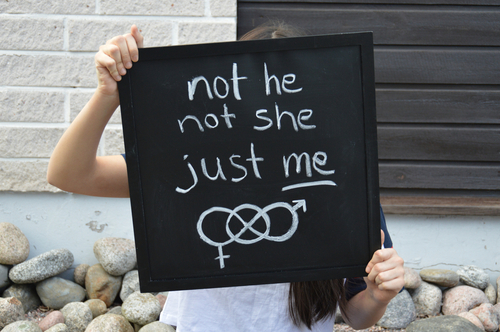Being in a Relationship With a Non-Binary Person

Love is a many-splendored thing, and the ability to fall in love with someone special is one of many great things about being alive. Navigating relationships can be challenging for anyone, regardless of gender identity or sexual orientation. From the easiest of friendships to marriages, ideally, a good relationship is one that is mutually beneficial to both members. Providing love and support to someone else is essential to a long-lasting relationship. However, existing outside of society’s prevailing gender binary comes with its own challenges. Here are some things you should know about being in a relationship with a non-binary person.
Living One’s Truth
It’s important to recognize that nonbinary or enby (nb) individuals deal with different issues when showing up as their true selves in a binary world. From forms that only have boxes for male and female to dating apps to gender-based societal norms and expectations, enby people are faced with systems and structures that cast aspersions on their gender identities (or lack thereof). Whereas transgender persons can indicate their genders irrespective of how they present, nonbinary folks often don’t have this option. If you’re dating someone who is agender or enby, you should be aware of this reality.
Keeping Things Neutral
When talking about romantic or sexual relationships, terms such as wife, husband, boyfriend or girlfriend are commonly used. When you’re dating an enby person, you should use gender-neutral terms to avoid misgendering them. For a serious, more long-term coupling or marriage, terms like “partner,” “better half” and “spouse” are appropriate. For people who are dating, there are plenty of terms of endearment that don’t refer to a particular gender identity:
- Lovey-dovey: honey, sweetheart, love, boo, sugar, baby
- Less so: significant other, lover
- Present participle: the person I’m seeing, the one I’m dating
Keep in mind that personal pronouns are often important to nonbinary people. Beyond pronouns, words and honorifics like “sir”, “madam”, “Mr” and “Mrs” should be avoided and substituted with new words such as “Mx” or “Xer.” Always ask the person you’re involved with, as they can let you know what works best for them.
Facing the World Together
Remember that the person you’re dating is not made of porcelain to be handled with extreme care. You will likely make mistakes in how you address them. As a friend, lover and ally, free and open dialogue is ultimately best. It’s good to ask questions and be open and honest when it comes to making a connection with this person. Think of yourselves as not just a couple but co-conspirators who are experiencing life together. Some helpful questions or conversations involve the following:
- Activities or events that are not supportive to the enby person
- The best way to introduce them to other people in your life
- Situations where your nonbinary friend or partner is not out
You won’t have all the answers and neither will the person you’re dating. That’s why it’s good to think of your relationship as an adventure the two of you are exploring together. Regular, open communication is key here.
Being Bold
Be prepared that being in a relationship with a non-binary individual may make you aware of some things for the first time. While your gender identity doesn’t change, other people’s perceptions of you may be altered once they know you’re involved with a nonbinary person. This may lead to some difficult conversations, and you may experience stress and anxiety as a result. It’s important to have discussions with the person you’re dating about this reality. Remember that you and your significant other are in this together.
Gender identity and expression shouldn’t stand in the way of love. Agender persons seek out companionship and affection and fall in love with people who see themselves as male or female. If you are in a relationship with a non-binary person, it’s good to be aware of these things as you work on being a lover, supporter and, ultimately, a life partner.














